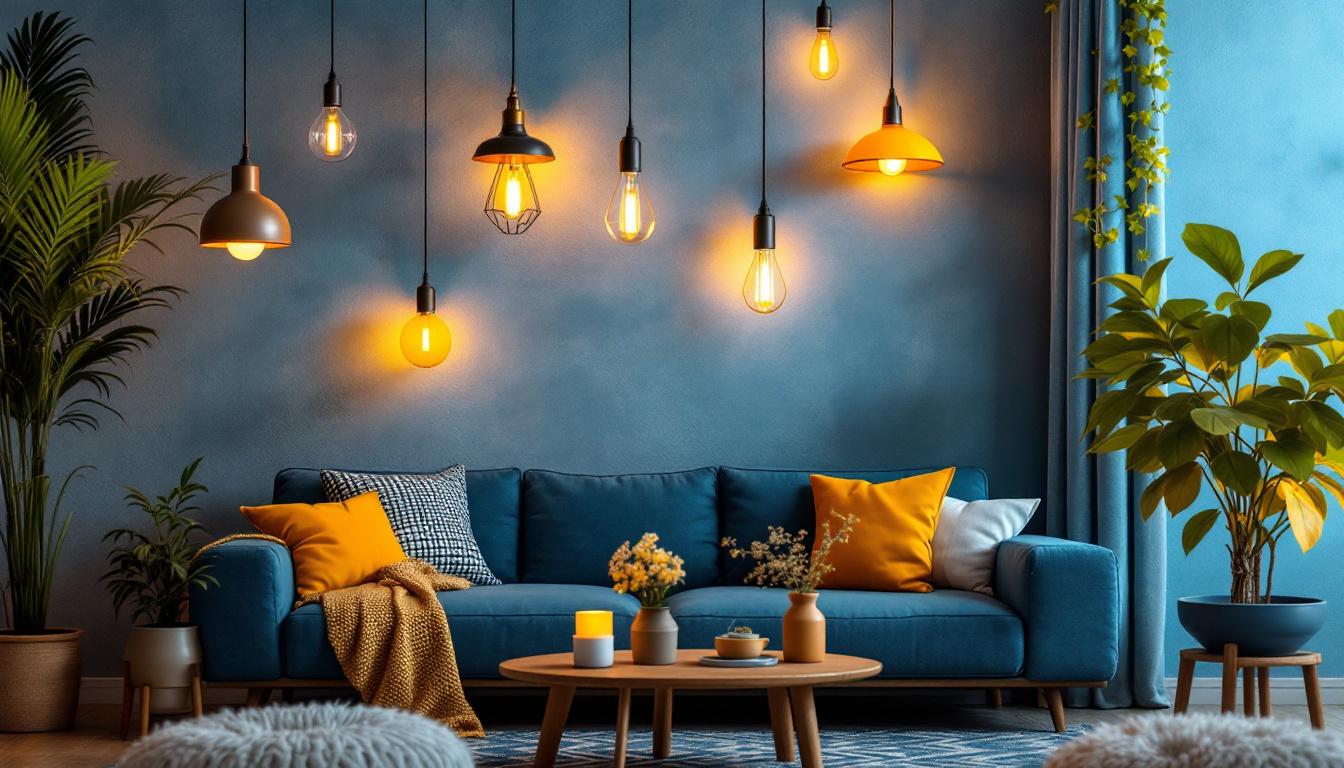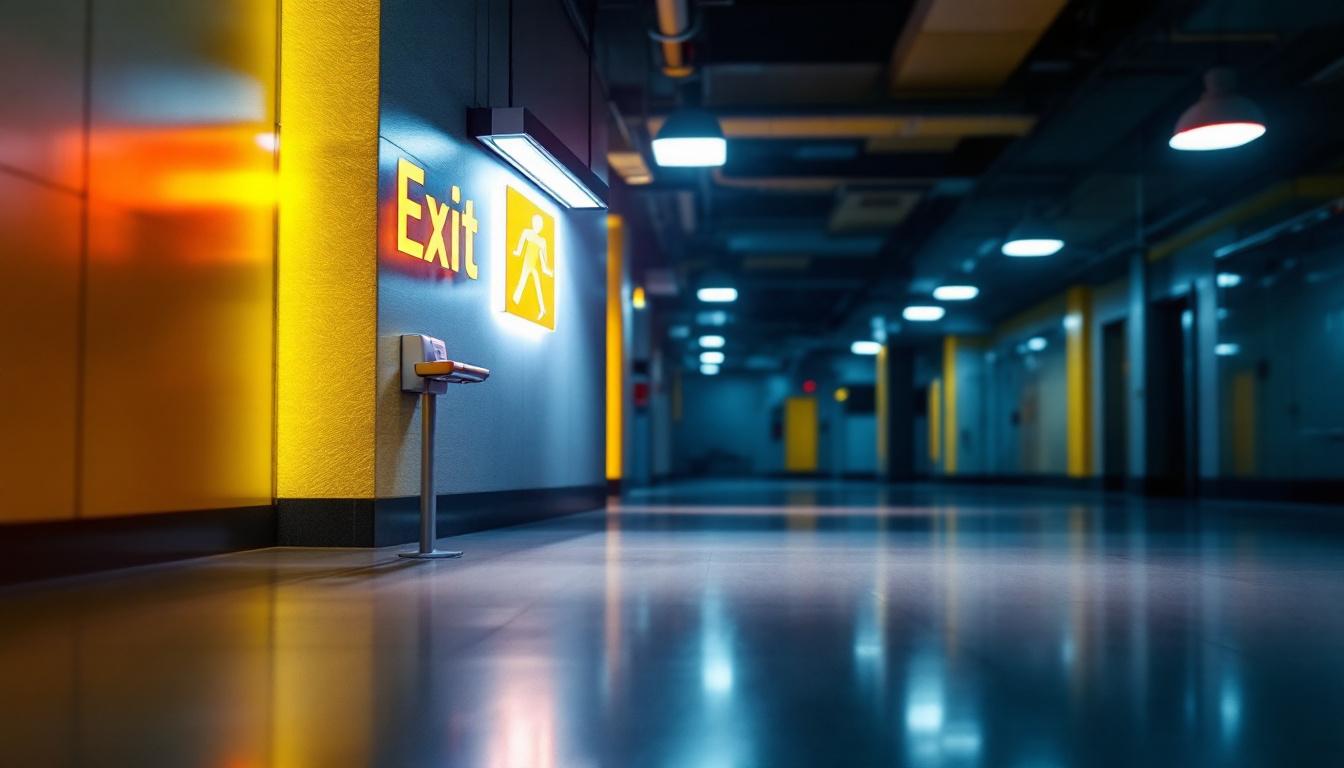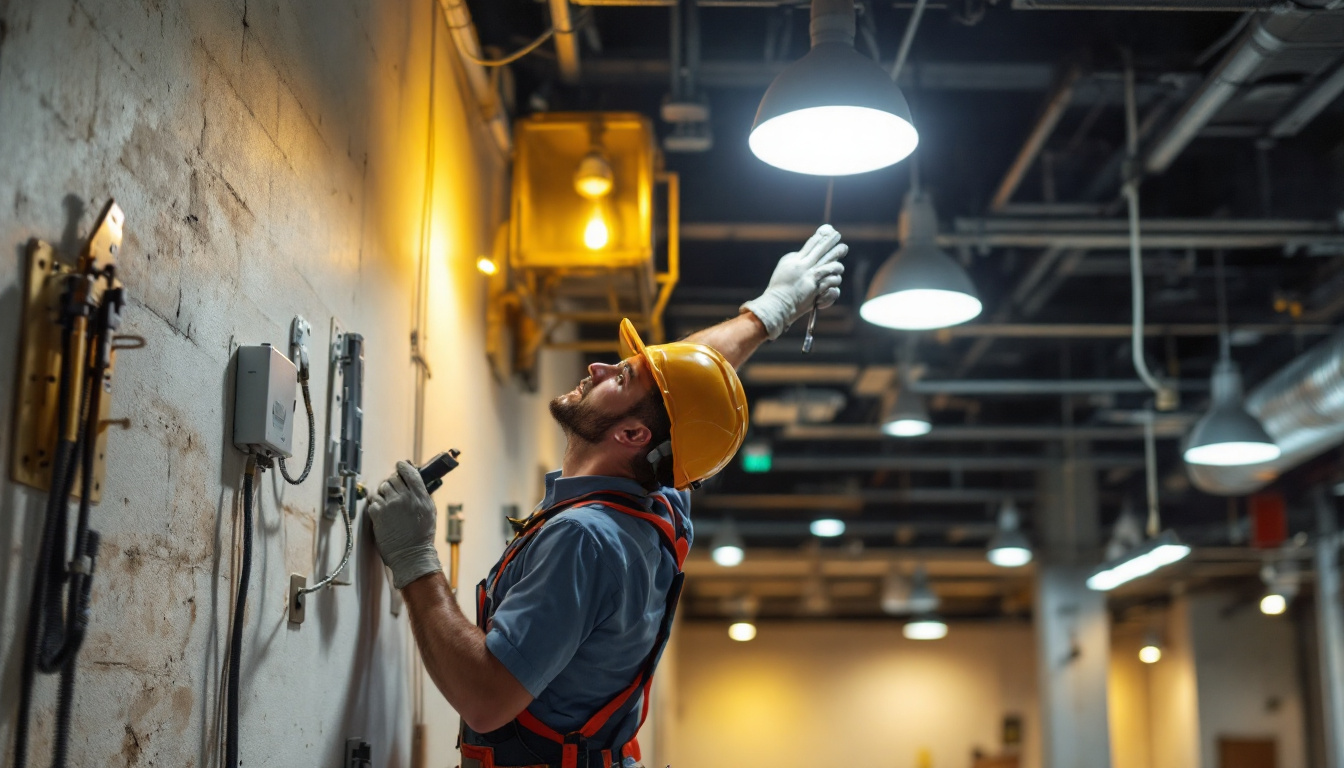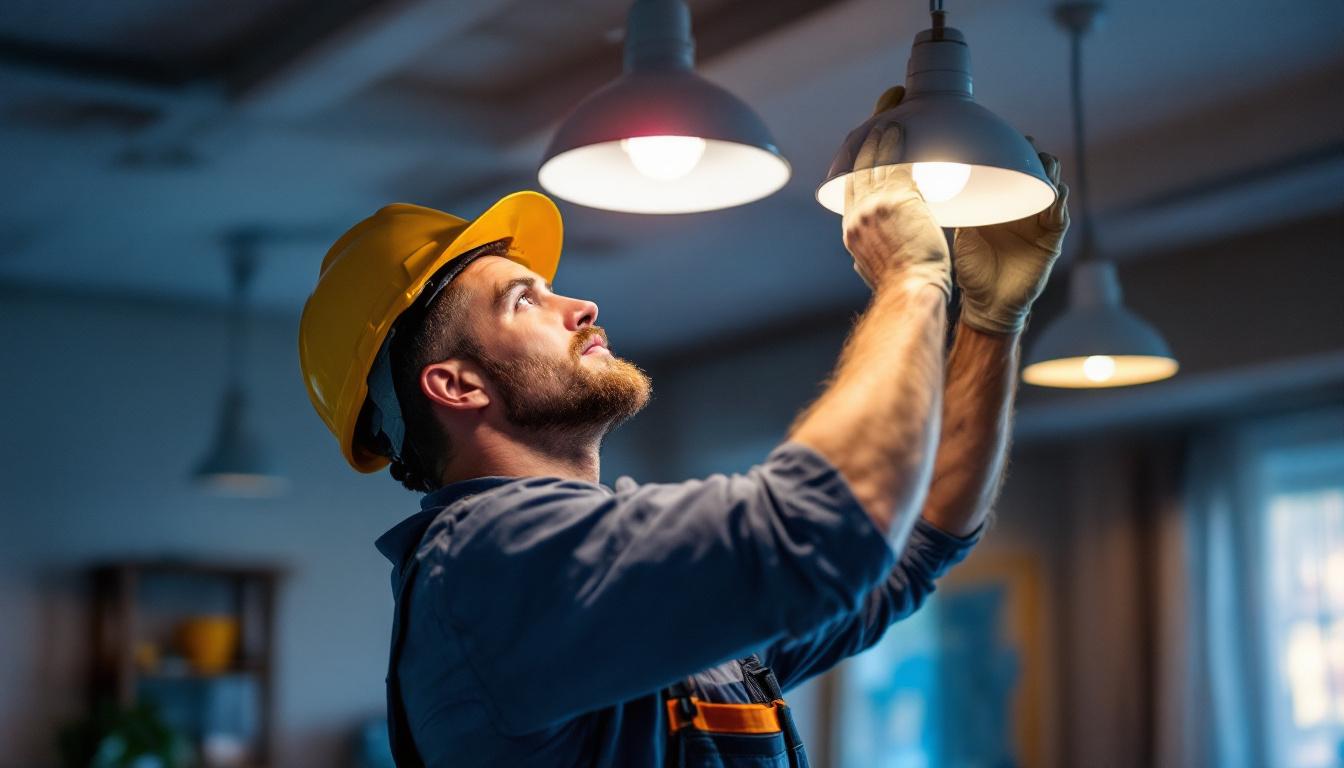
Before any lighting fixture is lifted or wired, understanding the project’s scope is crucial. This isn’t just about counting how many lights will hang down from the ceiling. It involves a thorough evaluation of the environment where the installation will take place and the specific requirements of the client.
Start by reviewing architectural plans, if available. These documents provide vital information about ceiling heights, structural supports, and electrical layouts. Knowing the exact dimensions and constraints helps avoid costly mistakes and rework.
Next, consider the environment. Is the space commercial, residential, or industrial? Each setting demands different lighting standards and safety considerations. For instance, a restaurant’s lighting needs differ vastly from those of a warehouse. Ambient light levels, ceiling material, and access points for installation all influence the approach.
Ceiling type and height: Suspended ceilings, concrete slabs, or exposed beams each require different mounting techniques.
Electrical infrastructure: Confirm the capacity of existing wiring and circuit breakers to handle new fixtures.
Accessibility: Determine how easy it will be to reach installation points. Will lifts or scaffolding be necessary?
In addition to these factors, it’s essential to assess the existing lighting conditions. Understanding the current light levels can help in designing a system that enhances the overall ambiance and functionality of the space. For example, in a retail environment, the lighting must not only illuminate products but also create an inviting atmosphere that encourages customer engagement. This might involve strategically placing fixtures to highlight key areas or products, while also ensuring that there are no harsh shadows or overly bright spots that could detract from the shopping experience.
Furthermore, consider the type of lighting technology that will be used. LED fixtures, for instance, offer energy efficiency and longevity, but they also come with their own set of installation requirements and considerations, such as heat dissipation and compatibility with existing dimming systems. Understanding these nuances will ensure that the chosen lighting solution not only meets aesthetic goals but also aligns with energy regulations and sustainability practices, which are increasingly important in today’s design landscape.
Not all lights are created equal. Selecting the appropriate fixtures is more than an aesthetic decision; it affects performance, safety, and longevity. Lighting contractors must balance client preferences with technical specifications and code compliance. The right choice can enhance the ambiance of a space, improve functionality, and even contribute to energy savings over time.
Start by identifying the type of lighting needed: ambient, task, accent, or decorative. Each serves a distinct purpose and requires different fixture types. For example, pendant lights are popular for hanging down and creating focal points, but they must be rated for the environment and load. Understanding the nuances of each type of lighting can help in making informed decisions; ambient lighting provides overall illumination, while task lighting focuses on specific areas where activities like reading or cooking occur. Accent lighting, on the other hand, is perfect for highlighting artwork or architectural features, adding depth and interest to the design.
Check the fixture’s weight and mounting requirements. Heavy fixtures demand secure anchors and possibly reinforcement in the ceiling. Confirm that mounting hardware matches the ceiling material and can support the load safely. Additionally, consider the height at which fixtures will be installed; this can significantly impact both functionality and aesthetics. For instance, fixtures hung too low in a dining area might obstruct views, while those placed too high may fail to provide adequate illumination.
Energy efficiency is another consideration. LED fixtures have become the standard due to their low power consumption and long lifespan. Additionally, ensure compatibility with dimmers or smart controls if the client desires advanced functionality. The integration of smart technology can also enhance user experience, allowing for customizable lighting scenarios that adapt to different activities or moods. Furthermore, when selecting fixtures, it’s important to consider the color temperature of the bulbs, as warmer tones can create a cozy atmosphere, while cooler tones are often more energizing and suitable for workspaces.
Don’t overlook the fixture’s IP rating, especially in damp or outdoor environments. This rating indicates protection against dust and moisture, which is critical for safety and durability. For outdoor applications, selecting fixtures with a higher IP rating ensures they can withstand the elements, prolonging their lifespan and maintaining performance. Additionally, consider the aesthetic impact of the fixtures in relation to the overall design theme of the space; fixtures should not only be functional but also complement the architectural style and interior decor, creating a cohesive look that enhances the overall environment.
Safety is non-negotiable when installing lights hanging down. Falls, electrical shocks, and fire hazards are potential risks if protocols aren’t followed. Lighting contractors must adhere to local electrical codes and industry best practices.
Begin by reviewing the National Electrical Code (NEC) or the relevant regional standards. These guidelines dictate wiring methods, grounding, and fixture installation to prevent hazards. Compliance isn’t just a legal obligation; it protects both the installer and the end user.
Ensure all team members wear appropriate PPE, including insulated gloves, hard hats, and safety glasses. Working at height requires harnesses and fall arrest systems. Inspect all safety gear before use.
Use insulated tools designed for electrical work to reduce the risk of shock. Regularly maintain and calibrate equipment like voltage testers and multimeters to ensure accuracy.
After installation, perform thorough testing. Check for proper grounding, correct voltage levels, and secure connections. Use a circuit tester to verify that the fixture is wired correctly and that no faults exist.
Document all tests and inspections. This record is valuable for future maintenance and demonstrates compliance with safety standards.
Installing lights that hang down requires precision and care. The process involves more than just attaching the fixture to the ceiling. Proper alignment, secure mounting, and neat wiring are essential for both function and aesthetics.
Begin by marking the exact location for each fixture based on the design plan. Use a laser level or chalk line to ensure consistent placement and height. Uneven lights can detract from the overall look and may cause glare or shadows.
Choose the right anchors for the ceiling type. Toggle bolts, expansion anchors, or concrete screws might be necessary depending on the substrate. For heavy fixtures, consider installing additional support brackets or mounting plates.
When suspending fixtures with chains or cables, verify that all connections are secure and capable of bearing the weight. Avoid using makeshift solutions like wire hangers or unapproved fasteners.
Run wiring through conduit or cable trays where required by code. Keep wires tidy and avoid sharp bends or kinks that could damage insulation. Use wire nuts or terminal blocks for secure connections, and double-check polarity and grounding.
Label circuits clearly to facilitate future troubleshooting. If multiple fixtures are connected to the same circuit, ensure the total load does not exceed the breaker’s capacity.
Once the installation is complete, a comprehensive inspection is vital. This step confirms that all fixtures are secure, wiring is safe, and lights function as intended. It also provides an opportunity to catch any issues before the client sees the finished work.
Check each fixture for stability and alignment. Turn the lights on and off multiple times to verify proper operation and dimmer compatibility if applicable. Look for flickering, buzzing, or uneven illumination.
Invite the client to walk through the space and review the lighting. Explain any features, controls, or maintenance tips. Clear communication helps build trust and ensures client satisfaction.
Provide detailed documentation, including wiring diagrams, fixture specifications, and warranty information. This package is invaluable for future maintenance or upgrades.
Lighting installations require ongoing maintenance to perform optimally. Preparing a maintenance plan during the project helps clients avoid unexpected failures and costly repairs.
Recommend regular cleaning of fixtures to remove dust and debris, which can reduce light output. Suggest periodic inspections of wiring and mounting hardware, especially in commercial or industrial settings where vibrations or environmental factors may loosen connections.
If a hanging light flickers or fails to turn on, the issue often lies in loose wiring or faulty switches. Encourage clients to check circuit breakers and replace bulbs with the correct wattage first.
For dimmer-related problems, verify compatibility between the dimmer and LED fixtures. Not all LEDs dim smoothly, and mismatched components can cause flickering or buzzing.
Instruct clients on what to do if they notice smoke, burning smells, or sparks near lighting fixtures. Immediate power shutdown and professional inspection are critical to prevent fire hazards.
Following this checklist will help lighting contractors deliver safe, efficient, and visually stunning lighting installations that stand the test of time. Hanging lights are more than just fixtures; they’re focal points that shape the atmosphere of any space. Treat each project with the care and professionalism it deserves.
Ready to elevate your lighting installations with the finest fixtures on the market? Look no further than LumenWholesale. We provide contractors with exceptional, spec-grade lighting products at prices that can’t be beaten. Our commitment to quality and affordability means you can complete your projects with confidence, knowing you’re installing reliable, high-performance lighting. Plus, with free shipping on bulk orders, you can stock up on premium lighting solutions without worrying about extra costs. Don’t compromise on quality or value—choose Wholesale Lighting at the Best Value and make your lighting projects shine with LumenWholesale.

Discover how emergency lights and exit signs boost energy efficiency, reduce costs, and enhance safety.

Discover the essentials of LED retrofitting with our comprehensive guide tailored for lighting contractors.

Discover expert insights and practical tips for lighting contractors in “Hi Hats Light.” This article delves into the nuances of selecting and installing hi-hat lighting, ensuring your projects shine with precision and style.

Discover the essential do’s and don’ts for lighting contractors when working with LED T5 lamps.